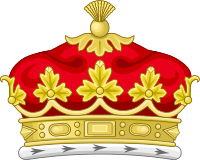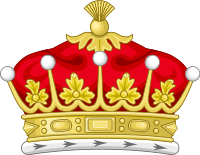The Peerage of England comprises all peerages created in the Kingdom of England before the Act of Union in 1707. In that year, the Peerages of England and Scotland were replaced by one Peerage of Great Britain.
Until the passage of the House of Lords Act 1999, all Peers of England could sit in the House of Lords. (Peeresses of England were only granted seats with the Peerage Act 1963).
The ranks of the English peerage are, in descending order, Duke, Marquess, Earl, Viscount, and Baron. While most newer English peerages descend only in the male line, many of the older ones (particularly older baronies) can descend through females. Under English inheritance law all daughters are co-heirs, so many older English peerage titles have fallen into abeyance between various female co-heirs.
Baronets, while holders of hereditary titles, are not peers and do not confer nobility. Knights, Dames, and holders of other non-hereditary Orders, decorations, and medals of the United Kingdom are also not peers.
In the following table, each peer is listed only by his or her highest English title, showing higher or equal titles in the other peerages.
Dukes in the Peerage of England
.svg/90px-Ermine_Robe_(Heraldry).svg.png)
See also List of Dukedoms in the Peerages of the British Isles
Marquesses in the Peerage of England

See also List of marquessates in the peerages of Britain and Ireland
Earls in the Peerage of England
.svg/90px-Ermine_Robe_(Heraldry).svg.png)
See also List of Earldoms in the Peerage of England
Viscounts in the Peerage of England

See also List of viscountcies in the peerages of Britain and Ireland
The [Viscount Montgomry]] || ||
Barons and Baronesses in the Peerage of England
See also List of Baronies in the Peerage of England
See also
- British nobility
- Peerage, an exposition of great detail
- Peerage of Scotland
- Welsh peers and baronets
- Peerage of Ireland
- Baronetages of England, Nova Scotia, Great Britain, and the United Kingdom
- History of the Peerage
- Gentry
- Landed gentry
- Forms of address in the United Kingdom
- British Honours System